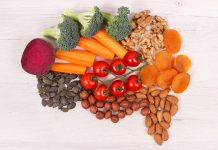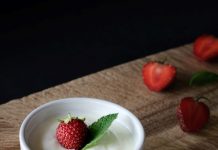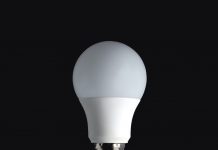Tribulus is a plant emerging in the modern supplement arena after being valued by many civilizations in antiquity.
What is Tribulus Terrestris?
Tribulus terrestris is an herbaceous plant belonging to the caltrop family (Zygophyllaceae). The reference to caltrops (which are spiky, human-made weapons) comes from the fruit that develops after the flower blooms. When the flower blooms, a fruit begins to form, which then falls apart into five spiky burs which resemble caltrops. Due to the sharp, spiky burs, Tribulus is considered a weed. It can easily puncture bicycle tires, earning it the name “puncture vine.” [1]
The origin of Tribulus' name is from the Greek word meaning “water chestnut.” It was later translated into the Latin word “tribulos,” which means caltrop. It soon became a name that was associated with the Tribulus plant in classical times. [1]
Tribulus was used in many countries as a traditional remedy, and it has many different names. The Chinese revere it in their Traditional Chinese Medicine philosophy, and call it Ci Ji Li, Bai Ji Li, or Ji Li. The Ayurvedic physicians in India call it Gokshura, Swadukantaka, Shuuadamshtra, Trikantaka, Chanadhruma, Vanashrungata, and Ikshugandhika in Sanskrit. In Hindi, it is known as Gokharu. Other names for Tribulus in India are Gokuri in the Benagali, Nerinci in Tamil, Kante gokaru in Marathi, and Palleru Kayalu in Telugu. [1][2]
What is the history of Tribulus Terrestris?
Tribulus terrestris has been a staple in many traditional, plant-based, folkloric medicinal philosophies all over the world. In the modern era, some athletes in the Olympics used Tribulus to enhance their performance in the 1990s. [3]
- Greece: The ancient Greeks used Tribulus as a mood enhancer and a diuretic. [2]
- China: Tribulus was included in the earliest known Chinese medicine publication: “Shen Nong Ben Cao Jing.” The fruits were used as a diuretic and to treat the kidneys. Other uses were as a cough expectorant and to treat eyesight problems. It was a popular remedy to relieve vertigo, headaches, itchy skin and blocked milk supply in mothers. [4]
- India: The fruits were used to treat infertility, low libido, impotence, and erectile dysfunction. The root and fruits were also used as a cardiotonic in Ayurvedic medicine. [4]
- Sudan: It was used as a treatment for inflammation of the kidneys, to relieve irritation of the mouth, and for general inflammation. [4]
- Pakistan: Tribulus was used as a diuretic and to increase excretion of uric acid via urine. [4]
- South Africa and Bulgaria: It was used to reduce swelling, treat digestive dysfunction, cardiovascular diseases, increase sperm production, and to treat eye disease. [2]
There are also reports of tribal South Africans who coat the seeds of Tribulus with the juice of poisonous berries to create lethal weapons. [1]
Common types of Tribulus Terrestris
Tribulus is a taprooted, flowering plant that is native to the Mediterranean region. It grows well in southern Europe and Asia, Africa, Australia, and New Zealand. It can also be found in Central, South, and North Americas, and it was introduced to California in the twentieth century. It spread from California north to British Columbia, Canada, and became so widespread that it is known as a noxious weed. Some states in America and South Australia also regard Tribulus as an invasive weed. [1]
Tribulus is often referred to as a “goathead” plant and can be a nuisance to local wildlife and livestock who often suffer injuries in their mouths from grazing. Even though many countries view Tribulus as a pesky weed, it is very hard to eradicate it through herbicidal or biological methods. A common biological intervention has been to introduce two species of weevils to the Tribulus plant to eat it. The seeds are viable for an average of seven years, making it difficult to find a long-term solution. [1]
Common varieties of Tribulus include:
- Tribulus terrestris var. terrestris
- Tribulus terrestris robustus
- Tribulus terrestris bicornutus
- Tribulus terrestris var. inermis [1]
What is Tribulus Terrestris made of?
The fruits contain flavonoids, flavonol glycosides, steroidal glycosides, steroidal saponins, furostanol saponins, furostanol glycosides, furosteroidal saponins, sapogenins, and alkaloids. [2]
There are 108 steroidal saponins found in Tribulus. These are a few of the steroidal saponins:
- Tigogenin
- Tigogenin-3-O-β -d-glc(1 → 4)-β -d-gal (A)
- Neotigogenin
- Terrestrosin F
- Desgalactotigonin
- Tigogenin-3-O-β -d-xyl-(1 → 2)-[β -d-xyl-(1 → 3)]-β -d-glc(1 → 4)-[α -l-rha(1 → 2)]-β -d-gal (C)
- Gitonin (B)
- Tribulosin
- Terrestrosin A and B
- Neogitogenin
- Gitogenin
- Gitogenin-3-O-β -d-glc(1 → 4)-β -d-gal
- Desglccolanatigonin
- F-gitonin
- 25R,S-5α-spiro-2α,3β-dihydroxyl-3-O-β -d-glc-(1 → 4)-β -d-gal
- Terrestrosin E
- Hecogenin [4]
The flavonoids of Tribulus include:
- Quercetin
- Isoquercitin
- Quercetin-3-O-gent
- Rutin
- Quercetin-3-O-gentr
- Quercetin-3-O-gent-7-O-glu
- Isorhamnetin
- Isorhamnetin-3-O-gent
- Isorhamnetin-3-O-glu
- Isorhmanetin-3-O-rutinoside
- Isorhamnetin-3,7-di-O-glu
- Isorhamnetin-3-O-gentr
- Isorhamnetin-3-O-p-coumarylglu
- Isorhamnetin-3-O-gentr-7-O-glu
- Kaempferol
- Kaempferol-3-O-gent
- Kaempferol-3-O-glu
- Kaempferol-3-O-rutinoside
- Kaempferol-3-O-gent-7-O-glu
- Tribuloside [4]
The alkaloids of Tribulus include:
- Tribulusamide C
- Tribulusin A
- Tribulusterine
- Harmine
- Harmmol
- Harman
- Tribulusimide C
- Terrestriamide
- N-trans-caffeoylyramine
- N-trans-coumaroyltyramine
- Terrestribisamide
Other constituents include:
- Benzoic acid
- 2-methyl benzoic acid
- Vanillic acid
- Ferulic acid
- Succinic acid
- Palmitic acid monoglyceride
- Docosanoic acid
- Tribulus acid
- Amino acids: threonine and alanine
- 4-ketopinoresinol
- Coumarin
- Uracil nucleic acid
- Emodin
- Physcion [4]
Safety and Side Effects of Tribulus Terrestris
Side effects of Tribulus include gastrointestinal symptoms (abdominal cramps, nausea, vomiting, constipation, or diarrhea) and excitability, insomnia, and heavy or prolonged menstrual bleeding. Two cases of kidney toxicity (nephrotoxicity) after drinking large amounts of water containing Tribulus were reported. People who have eaten the Tribulus fruit (that is covered in spines) suffered from bronchial polyps and punctures of the lung in 2 cases because of the migration of the spines into the thorax. [3]
Tribulus can cause renal toxicity in ruminant animals. [3]
Tribulus interacts with some medications, herbs, and supplements, so consult with your doctor before starting any supplementation. Its main interactions with medications, herbs, and supplements are related to its blood-glucose and blood-pressure effects, so it is recommended that you discontinue Tribulus at least two weeks before surgery. [3]
References
- “Tribulus Terrestris.” Wikipedia, en.wikipedia.org/wiki/Tribulus_terrestris.
- Yanala, Suresh Reddy, et al. “A Recent Phytochemical Review – Fruits of Tribulus Terrestris Linn .” Journal of Pharmaceutical Sciences and Research, vol. 8, no. 3, 2016, pp. 132–140., www.jpsr.pharmainfo.in/Documents/Volumes/vol8Issue03/jpsr08031601.pdf.
- “Tribulus terrestris.” Foods, Herbs & Supplements. https://naturalmedicines.therapeuticresearch.com/databases/food,-herbs-supplements/professional.aspx?productid=39
- Zhu, Wenyi et al. “A review of traditional pharmacological uses, phytochemistry, and pharmacological activities of Tribulus terrestris.” Chemistry Central journalvol. 11,1 60. 11 Jul. 2017, doi:10.1186/s13065-017-0289-x
- Roaiah, MF, et al. “Pilot Study on the Effect of Botanical Medicine (Tribulus Terrestris) on Serum Testosterone Level and Erectile Function in Aging Males With Partial Androgen Deficiency (PADAM).” J Sex Marital Ther., vol. 42, no. 4, 18 May 2016, pp. 297–301., doi:10.1080/0092623X.2015.1033579.































